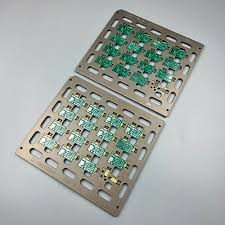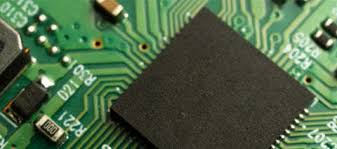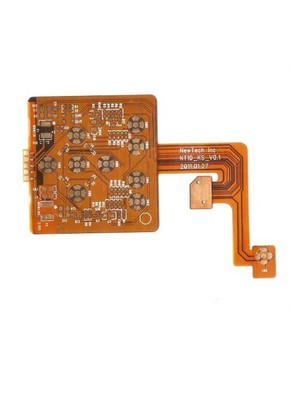De afgelopen jaren heeft de elektronica-industrie ingrijpende veranderingen ondergaan, waarbij kunstmatige intelligentie (AI) en machinaal leren snel in opkomst zijn. Deze geavanceerde technologieën hebben de automatisering gestimuleerd, de kwaliteitscontrole geoptimaliseerd en waardevolle gegevens en inzichten opgeleverd in de surface mount technology (SMT) productie van printed circuit board assembly (PCBA). De integratie van AI in de productie van elektronica betekent een verschuiving van traditionele methoden naar slimmere, meer adaptieve benaderingen. Aan de andere kant biedt de fusie van AI en AOI een transformatieve kans. De SMT-industrie heeft uitdagingen overwonnen en AI-oplossingen geïmplementeerd die worden aangedreven door vooruitgang in hardware, machine vision en AI-algoritmen. Deze ontwikkelingen hebben mechanische structuren versterkt en fout-positieven verminderd. In industrieën met hoge betrouwbaarheidseisen, zoals de automobiel- en luchtvaartindustrie, biedt AI een oplossing voor de tekortkomingen van geautomatiseerde inspectie, terwijl aan de productie-eisen wordt voldaan en de processen voortdurend worden verbeterd. Het toeval wil dat de pick-and-place machines en röntgenapparaten van Nectec allemaal de realtime rekenfuncties van AI hebben geïmplementeerd om de precisie en snelheid van het monteren van chipcomponenten te verbeteren. Interessant is wat AI een onmisbaar onderdeel maakt van het SMT fabricageproces. Er zijn vijf punten die het vermelden waard zijn.
Het eerste punt is de automatiseringsondersteuning van AI. In het begin moeten technici bij het programmeren van AOI handmatig honderden inspectieparameters configureren op basis van PCB CAD-gegevens. Dit complexe en vervelende proces kan tot 10 uur in beslag nemen voor elk nieuw ontwerp. AI-programmeeroplossingen hebben dit proces veranderd door automatisch complete AOI-programma's te genereren in enkele minuten zonder menselijke tussenkomst. Deze geautomatiseerde programmeertools analyseren PCB-ontwerpbestanden, stuklijsten, componentvormen/-afmetingen en stellen automatisch optimale inspectieomstandigheden voor. Machine vision en deep learning algoritmen kunnen snel belangrijke informatie uit ontwerpbestanden halen om inspectieprogrammering aan te bevelen die geschikt is voor de printplaat. Deze automatisering vereenvoudigt het schakelen tussen printplaten.

Tweede punt, het betrouwbare inspectiesysteem van AI. Een van de nuttigste voordelen van AI inspectie is het betrouwbare detectiesysteem voor visuele inspectie van veelvoorkomende defecten en complexe oppervlaktecomponenten. Bij het inspecteren van beschadigde onderdelen van SMT-componenten, zoals chips, geïntegreerde schakelingen en connectoren. En eigenlijk is het moeilijk om het uiterlijk van de beschadigde onderdelen te voorspellen. Door te trainen op voorbeelden gebaseerd op menselijk leren, kan AI leren hoe defecten te identificeren. Op dit moment bereiken componenttypen zoals SMD-chips, LED's, OSC, MLD, SOD, SOT23, RNET, CNET, IC's en connectoren een hoge nauwkeurigheid. Het wordt aanbevolen om de eigenaar van het AI-model te raadplegen om te bepalen welke typen beschikbaar zijn om deze functie in te schakelen, zodat de verificatienauwkeurigheid wordt verbeterd en de werklast van de operator wordt verminderd.
Derde punt, implementatie van AI-inspectiealgoritmen. Traditionele OCV/OCR-algoritmen vereisen afzonderlijke training en verbruiken veel tijd en mankracht om te configureren. OCV/OCR wordt gemakkelijk verstoord door verschillen in lettertypes en ontbrekende tekens, wat resulteert in een hoog percentage fout-positieven, soms meer dan 10%-20%. AI OCV/OCR heeft een lettertypebibliotheek gebouwd en verfijnd die geoptimaliseerd is voor tekenprecisie. AI OCV/OCR kan tekens met een laag contrast gemakkelijk detecteren, wat voor traditionele methoden bijna onmogelijk is. De aanwezigheid van defecten met een laag contrast en ruis in beeldvorming vormt een uitdaging bij optische inspectie, zoals holtes bij röntgeninspectie en lijm op oppervlakken bij optische inspectie.

Vierde punt: slimme sorteerfunctie geïmplementeerd binnen AI. AI kan niet alleen defecten detecteren, maar ze ook op intelligente wijze classificeren op type, ernst en oorsprong. Deze classificatie maakt een gerichte analyse van de hoofdoorzaak mogelijk, waardoor defecten minder vaak voorkomen en het kwaliteitscontrolesysteem robuuster wordt. Een voorbeeld van classificatie is voor nieuwe componenten met verschillende vormen en maten, waarvoor meestal een herprogrammering van het inspectiesysteem nodig is. AI pakt deze uitdaging aan door het inspectiesysteem in staat te stellen om snel te trainen op nieuwe componenten zonder dat herprogrammering nodig is. Een andere AI inspectietoepassing is de detectie van vreemde voorwerpen.
Het laatste en vijfde punt is de slimheid en flexibiliteit van AI in AOI. Dankzij de flexibiliteit van AI kunnen AOI-systemen verschillende soorten componenten, kleuren en printplaatmaterialen verwerken zonder herprogrammering. Door te trainen op representatieve beelden die verwachte variaties bevatten, leren AI-algoritmes onderscheid te maken tussen acceptabele procesvariaties en echte defecten. Deze flexibiliteit is vooral waardevol in omgevingen met een hoge productmix waar productvariaties veel voorkomen. Als gevolg hiervan worden post-optische inspectiereparatiestations slimmer door AI; deze stations maken nu gebruik van het potentieel van AI om beslissingen te nemen zoals mensen dat doen, waardoor de noodzaak voor handmatige herinspectie afneemt, de operationele kosten dalen en gegevens over de inspectiestatus in realtime worden geanalyseerd.

Kortom, de transformerende kracht van AI in inspecties en slimme fabrieken belooft ongeëvenaarde efficiëntie, aanpassingsvermogen en kwaliteitsborging. Het geeft de toekomst van innovatie en door automatisering gestuurde elektronicaproductie een nieuwe vorm. De impact van AI reikt verder dan inspectie en omvat het hele ecosysteem van elektronicaproductie, en we kijken uit naar dit nieuwe tijdperk.





